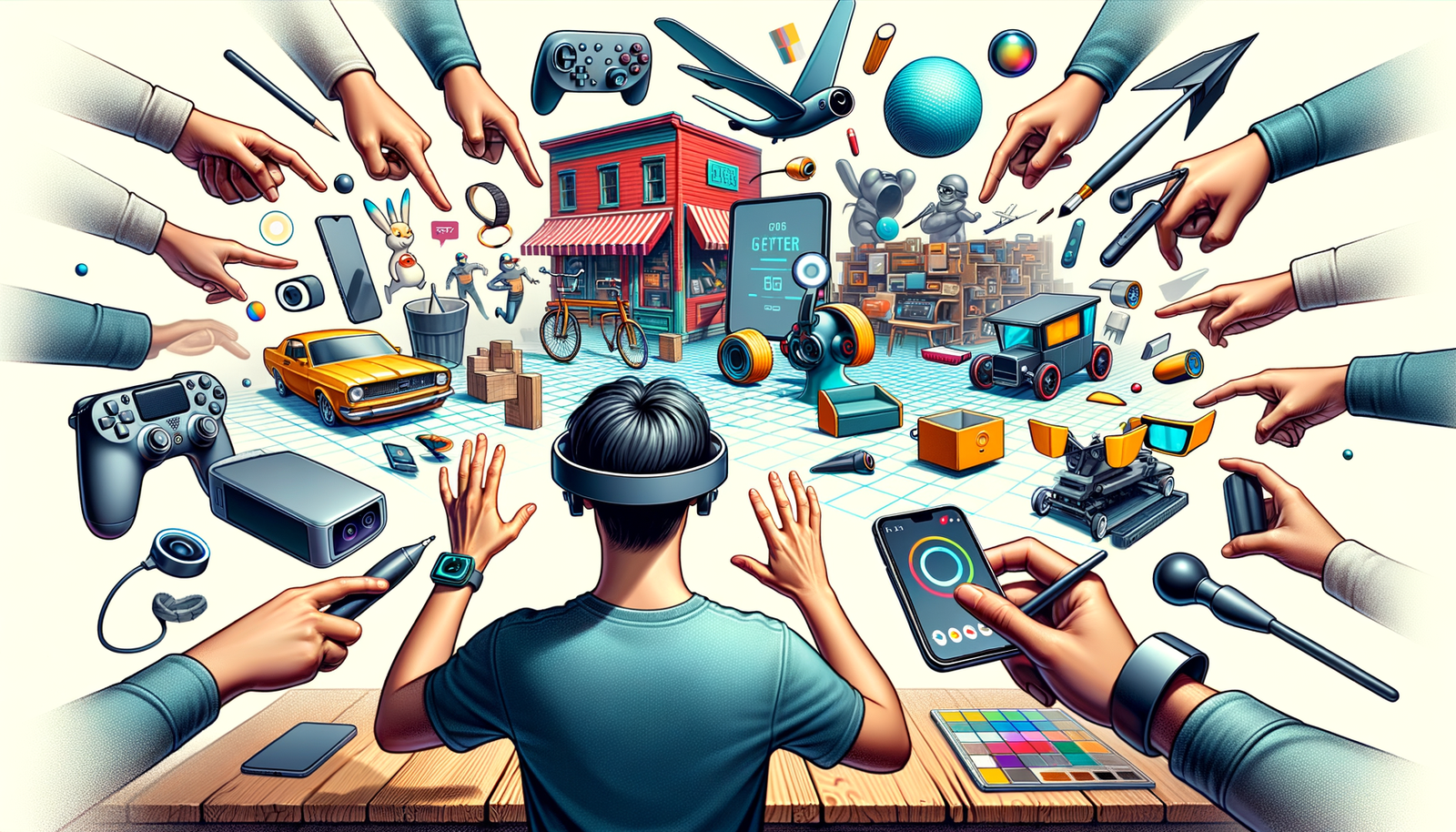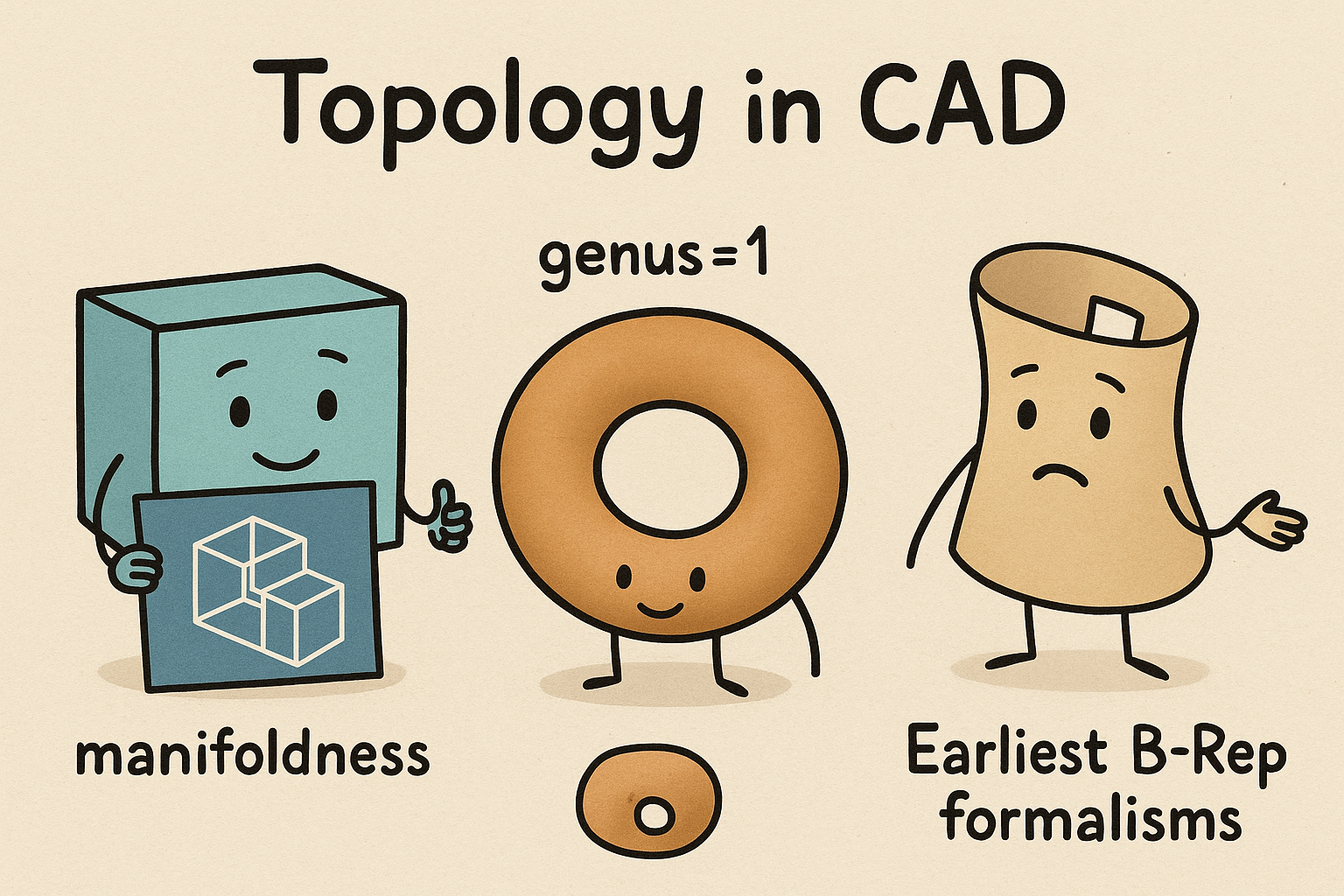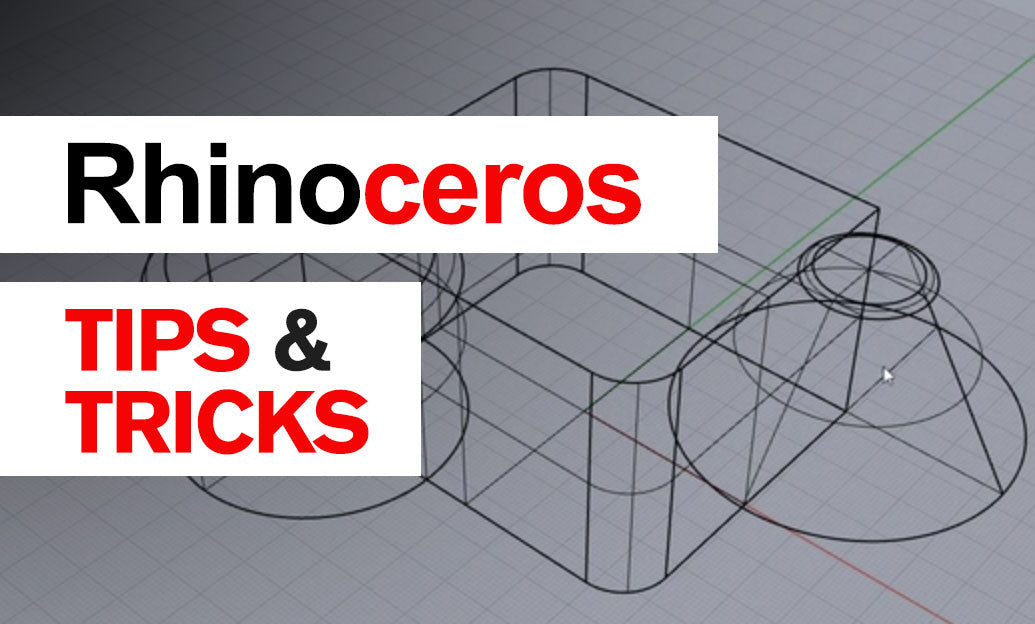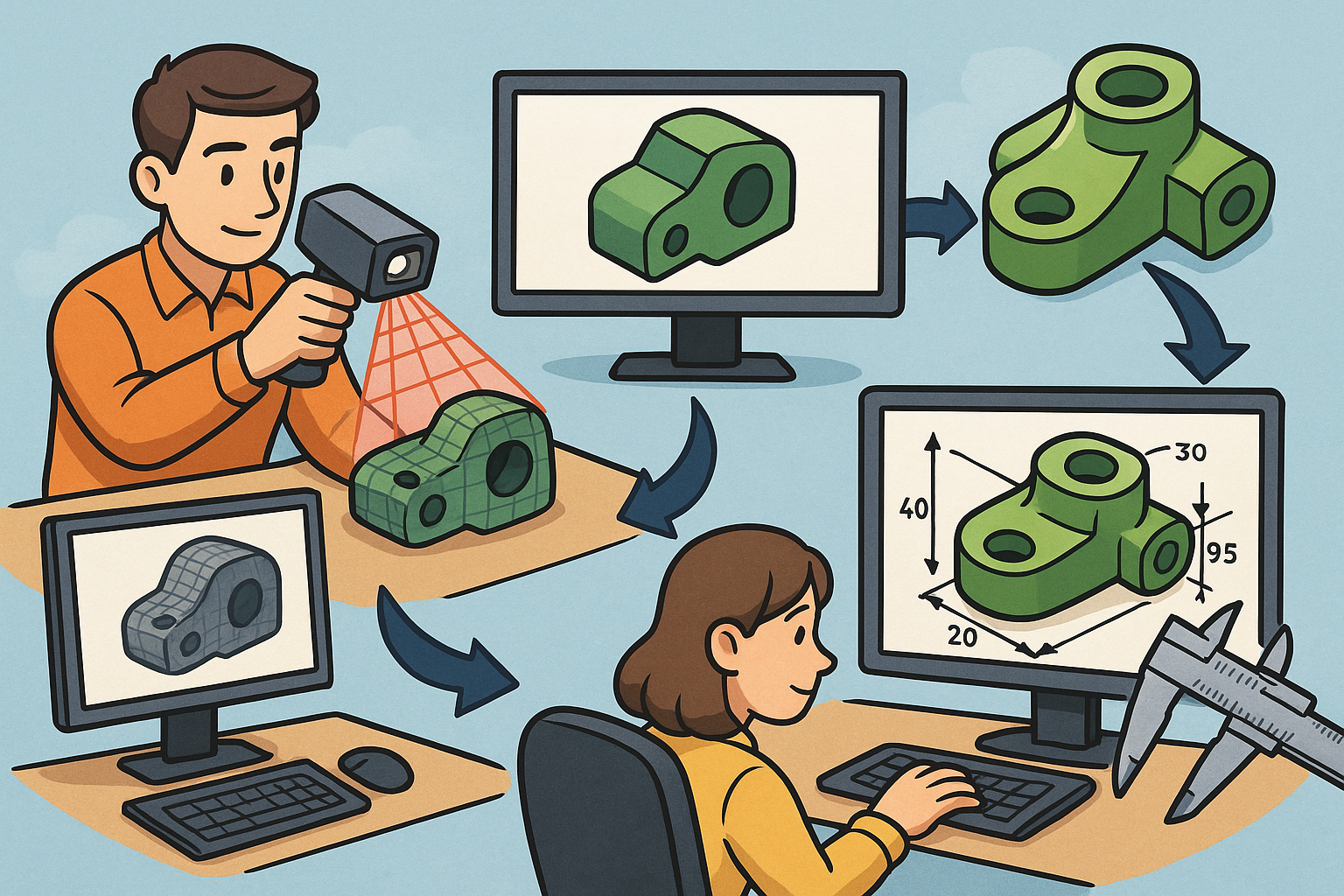Your Cart is Empty
Customer Testimonials
-
"Great customer service. The folks at Novedge were super helpful in navigating a somewhat complicated order including software upgrades and serial numbers in various stages of inactivity. They were friendly and helpful throughout the process.."
Ruben Ruckmark
"Quick & very helpful. We have been using Novedge for years and are very happy with their quick service when we need to make a purchase and excellent support resolving any issues."
Will Woodson
"Scott is the best. He reminds me about subscriptions dates, guides me in the correct direction for updates. He always responds promptly to me. He is literally the reason I continue to work with Novedge and will do so in the future."
Edward Mchugh
"Calvin Lok is “the man”. After my purchase of Sketchup 2021, he called me and provided step-by-step instructions to ease me through difficulties I was having with the setup of my new software."
Mike Borzage
Augmented Reality in Design: Revolutionizing Product Visualization with Interactive 3D Rendering and Enhanced User Engagement
November 11, 2024 6 min read


Introduction to Augmented Reality (AR) in Design
Augmented Reality (AR) has rapidly emerged as a transformative technology in the field of design, offering a new dimension to product visualization. By superimposing digital information onto the physical world, AR enables designers and consumers alike to interact with virtual prototypes in real-world environments. This integration of digital and physical spaces enhances the understanding of product form and function, bridging the gap between imagination and tangible experience. The evolution of AR technology has been propelled by advancements in computing power, sensor technology, and software development, making it increasingly accessible and sophisticated. In the context of product visualization, AR provides a dynamic platform that enriches the design process and elevates the user experience, fostering greater engagement and collaboration between stakeholders.
Enhanced Visualization
One of the most significant benefits of integrating AR into product visualization is the ability to achieve real-time 3D rendering of products in physical environments. This capability allows designers to overlay virtual models onto real-world settings, providing a comprehensive view of how a product will interact with its intended surroundings. By leveraging AR, design teams can assess spatial relationships, scale, and aesthetic appeal more accurately than traditional 2D representations or static 3D models permit. Furthermore, AR facilitates improved feedback loops through immersive experiences, enabling stakeholders to interact with the product prototype interactively. This hands-on approach accelerates the identification of design flaws, supports iterative refinements, and ultimately leads to a more polished final product. The immersive nature of AR visualization fosters a deeper understanding of the design intent, which is crucial for complex or innovative products where traditional visualization methods may fall short.
Increased Engagement
Augmented Reality introduces a new level of interactivity to product visualization, which significantly increases user engagement. Interactive user interfaces within AR applications capture attention by allowing users to manipulate virtual objects directly. This hands-on interaction can include rotating, scaling, and exploring different configurations of the product, providing a more engaging and informative experience than passive viewing. Additionally, the application of gamification elements in design visualization leverages game-design principles to make the exploration of product features more compelling. For example, incorporating challenges or rewards within the AR experience can motivate users to delve deeper into the product's capabilities. This heightened engagement is beneficial not only for design teams but also for clients and end-users, who can gain a more comprehensive understanding of the product and provide more valuable feedback.
Cost and Time Efficiency
The integration of AR in product visualization offers substantial cost and time efficiencies by reducing the reliance on physical prototypes. Physical prototyping can be expensive and time-consuming, often requiring multiple iterations before arriving at a finalized design. AR enables designers to create virtual prototypes that can be tested and modified in real-time, significantly speeding up the design cycle. This streamlined process allows for faster iterations, as changes can be made digitally without the need to produce a new physical model each time. Additionally, AR can simulate various scenarios and stress conditions, providing valuable insights without the associated costs of physical testing. The reduction in material waste and labor associated with physical prototypes not only saves resources but also contributes to sustainable design practices.
Integration with Existing Design Tools
Implementing AR in design workflows involves the seamless integration of AR capabilities with existing design tools. Many software platforms have successfully integrated AR features, providing designers with familiar interfaces augmented by new functionalities. For instance, CAD programs now often include AR modules that allow for the direct projection of 3D models into physical spaces. However, developers face challenges in ensuring compatibility and maintaining performance levels. Key considerations include the computational demands of rendering complex models in real-time and the need for intuitive user interfaces that do not disrupt existing workflows. To address these challenges, developers focus on optimizing software algorithms and leveraging advancements in hardware acceleration. Successful integration results in a cohesive toolset where AR features enhance rather than hinder the design process.
User Experience Considerations
Designing user-friendly interfaces for AR applications is crucial to avoid overwhelming users and to maximize the technology's benefits. The complexity of AR systems can be a barrier if not managed effectively. It is essential to balance the richness of features with ease of use, ensuring that users can navigate and utilize AR functionalities intuitively. Key strategies include:
- Simplifying interface designs to focus on essential tools and controls.
- Providing clear instructions and tutorials within the application.
- Incorporating adaptive interfaces that cater to users' skill levels.
Use Cases and Industry Examples
Across various industries, AR is being adopted to revolutionize product visualization and the design process. In the consumer goods sector, AR allows for virtual try-ons and interactive product demonstrations, enhancing marketing efforts and customer engagement. In automotive design, AR facilitates the visualization of vehicle components within actual vehicles or in simulated environments, aiding in ergonomics and safety assessments. Architectural design benefits from AR by enabling architects and clients to walk through virtual structures on-site, providing a tangible sense of scale and spatial relationships. These implementations showcase the versatility of AR and its potential to improve collaboration, reduce errors, and accelerate project timelines. The positive impacts seen from early adopters underscore the value of incorporating AR into standard design practices.
Evolving AR Technologies
The future of AR in product visualization is closely tied to ongoing advances in hardware and software. Developments in wearable technology, such as AR glasses and headsets, are making AR experiences more seamless and accessible. These devices offer higher resolution displays, improved comfort, and longer battery life, enhancing practicality for extended use. On the software side, machine learning and artificial intelligence are being integrated to provide more sophisticated interactions, such as gesture recognition and predictive modeling. The advent of 5G networks and edge computing plays a significant role in improving AR experiences by reducing latency and enabling real-time data processing. These technologies allow for more complex and data-intensive AR applications to run smoothly, providing users with richer and more responsive experiences.
Potential Challenges
Despite the promising advancements, several challenges must be addressed to fully realize the potential of AR in product visualization. Data privacy and cybersecurity concerns are paramount, as AR applications often require access to sensitive design information and real-time data transmission. Protecting intellectual property and ensuring secure communication channels are critical. Moreover, ensuring accessibility for users with varying levels of technical skill is essential to widespread adoption. Designing AR systems that are inclusive and user-friendly requires thoughtful consideration of diverse user needs. Potential solutions include:
- Implementing robust encryption and security protocols.
- Providing customizable user interfaces that accommodate different experience levels.
- Offering comprehensive support and training resources.
Looking Ahead
As AR technology continues to evolve, it is poised to play a pivotal role in shaping the future of product visualization. Predictions indicate that AR will become increasingly integrated into everyday design processes, offering unprecedented levels of interaction and insight. The importance of interdisciplinary collaboration cannot be overstated in advancing AR technologies. Combining expertise from design, engineering, computer science, and human factors will drive innovation and create solutions that are both technologically advanced and user-centric. Designers and companies are encouraged to explore AR as a valuable tool to enhance their visualization strategies, improve collaboration, and connect more deeply with their audiences. The continued investment in AR will not only transform how products are designed and visualized but also how they are perceived and experienced by consumers.
Conclusion
In conclusion, Augmented Reality represents a significant advancement in product visualization, offering a transformative approach that enhances the design process and user engagement. The ability to integrate virtual prototypes into real-world environments provides designers with powerful tools to visualize, test, and refine products efficiently. Ongoing innovation and adaptation within design practices are essential to fully leverage the benefits of AR. As technology progresses, embracing AR will enable designers and companies to stay at the forefront of their industries, fostering innovation and creating more meaningful connections with their audiences. The call to action is clear: explore and adopt AR technologies to elevate product visualization and unlock new dimensions of creativity and collaboration.
Also in Design News

Design Software History: Topology in CAD: Manifoldness, Genus, and the Earliest B‑Rep Formalisms
January 02, 2026 14 min read
Read MoreSubscribe
Sign up to get the latest on sales, new releases and more …




